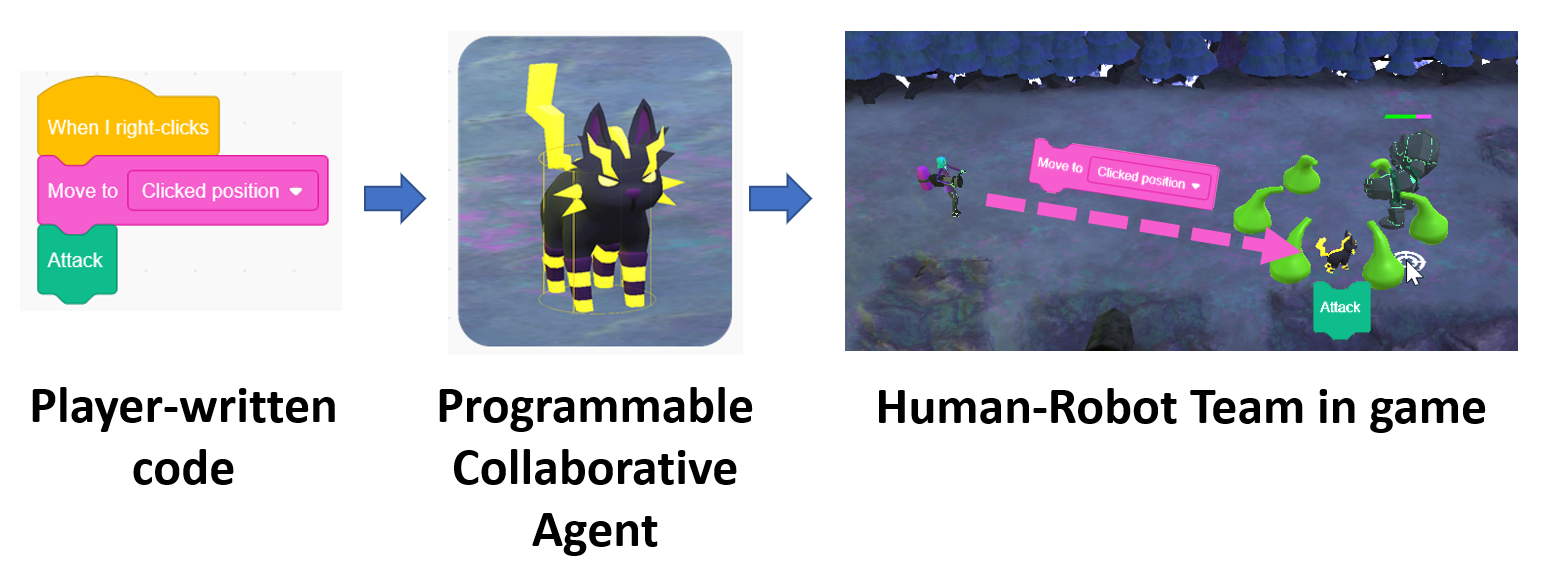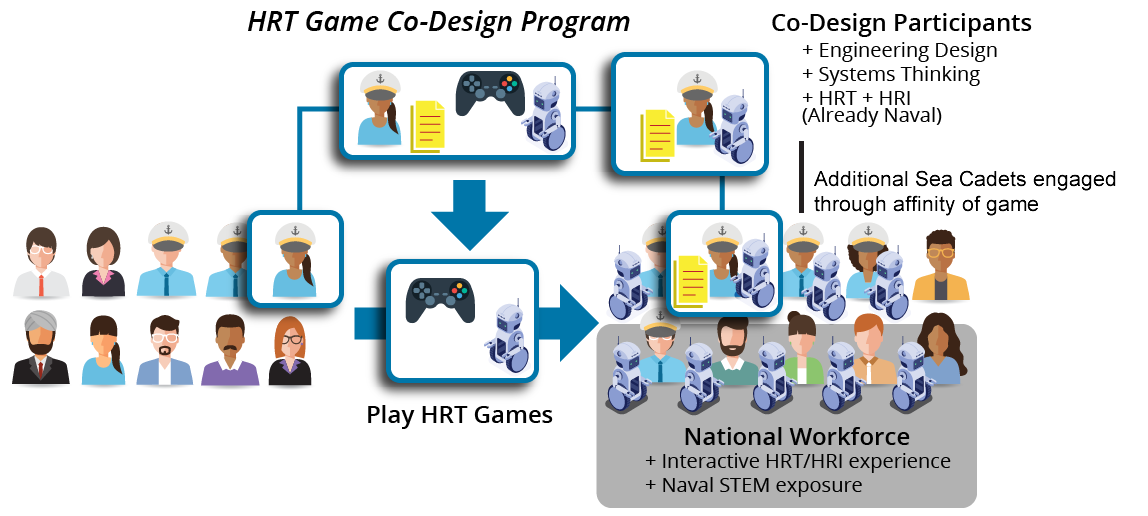Digital Games for Human-Robot Teaming
Human-Robot Teams are units in which robots operate in a collaborative mode with human operators. This preserves the flexible thinking, initiative, and ethical responsibility of human operators, while bringing to bear the physical, sensory, and computational capabilities of robotics. To truly take advantage of human-robot teaming, the Navy needs operators who are comfortable with this arrangement, as well as designers and engineers who can imagine and build new applications that maximize its benefits.
Our approach builds on an NSF basic research project (#1906753) that explored the concept of “cobot games” (collaborative robot games). Games allow players to quickly take on new roles in novel contexts – such as human-robot teaming arrangements – while bypassing existing motivational barriers and building new STEM motivation through success. The NSF work confirms that the “cobot games” format is well-aligned with the needs and goals of a Naval STEM adaptation, and also provides technical infrastructure that accelerates game creation. We call these new experiences Naval STEM Human-Robot Teaming Games.
 Figure 1. Conceptual diagram illustrating flow of code logic from player-written code to programmable collaborative agent (robot/cobot), who executes the player’s code in support of the player during the game. Event-based programming logic emphasizes the nature of the cobot’s role as responsive to gameplay conditions in real-time, rather than pre-scripting.
Figure 1. Conceptual diagram illustrating flow of code logic from player-written code to programmable collaborative agent (robot/cobot), who executes the player’s code in support of the player during the game. Event-based programming logic emphasizes the nature of the cobot’s role as responsive to gameplay conditions in real-time, rather than pre-scripting.
The Naval STEM Human-Robot Teaming Games project engages youth from Naval STEM to co-design a new game that appeals to them and their peers. Co-designers are recruited from the United States Navy Sea Cadets Corps (USNSCC). The co-design curriculum collects data and coordinates youth design work following an Engineering Design process. Their contributions are focused on game systems and narrative design, rather than implementation of those designs. NAWCTSD connects subject matter experts in Naval applications of human-robot teaming to give presentations to the co-design cohort each year to guide and inspire the human-robot teaming arrangements they use in their games. Games are playtested with the broader Sea Cadet Corps, and publicly released at the end of each year.

Figure 2. Schematic illustration of impact pathways of the proposed work. A small cohort of USNSCC cadets participate in a Human-Robot Teaming (HRT) game co-design program, gaining extensive skills and experience. The game they co-create is playtested with a large pool of Sea Cadets, and released to the general public, offering interactive exposure to HRT and Naval STEM. Genre, aesthetic, and other co-designer choices help the game appeal to other youth.
Youth from different groups of Sea Cadets will participate in the program each year. As part of the research, we test the hypothesis that youth from a particular group will make design decisions that are engaging to others from similar backgrounds.

Figure 3. Game design activities in this project are focused on design in the engineering sense: an intentional process of planning and specification of complex systems (such as rules and narrative), rather than common use of “game design” as a thin cover for coding curriculum.
This approach is expected to produce:
- Knowledge, skills, and affective gains around Human-Robot Teaming, Naval STEM careers, coding, and human-robot interaction fields among 2000+ players of each game
- Experience and skill gains around Engineering Design process, systems thinking, and critical media literacy among co-designers, who are approximately 36 high-Naval interest youth
- Research findings on the generalizability and scalability of “cobot games” and co-design
- Relationships and platforms that enable sustainability beyond the period of performance
The project is sponsored by the Department of the Navy, Office of Naval Research under ONR award number N00014-23-1-2455.
